
The most convenient (and cheapest) place to charge your electric car is at home. This guide will cover everything you need to know about charging your electric car at home.
What we'll cover:
🔤 Charging basics - key jargon explained.
🛒 Types of chargers - differences in speed, cost, and functionality.
🆚 Choosing the right charger - the things you’ll need to consider.
💲 Typical costs for chargers and installation.
The Cost of Charging your EV at Home in Australia
Electric cars are much cheaper to charge than petrol cars are to fuel for the same distance covered. Charging your electric car from home, is by far the cheapest option, particularly if you have access to solar. Charging your electric car at home will cost between $0.50 to $5 per 100km depending on the source of energy. Based on average rates we are seeing in the market, home charging is on average 50% cheaper than relying on public chargers. Some energy retailers have special off-peak and EV charging rates which may yield even greater savings. Below, we've compared the cost of covering 100 km across different sources.
You may be interested in:
➡️ How to use a public EV charging station (step-by-step guide)
Power (kW) and Capacity (kWh) Explained
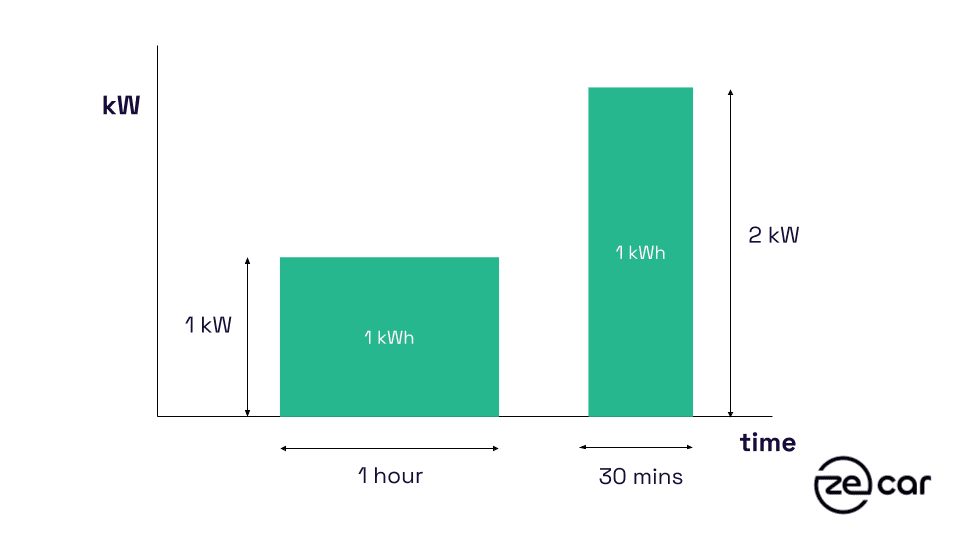
Current (AC/DC) Explained
The grid and your home operate on alternating current (AC) electricity. The battery in your electric car only accepts direct current (DC) electricity. This means AC to DC conversion will occur via;
🚗 The onboard charger in the car; or
⛽ An external DC charger.
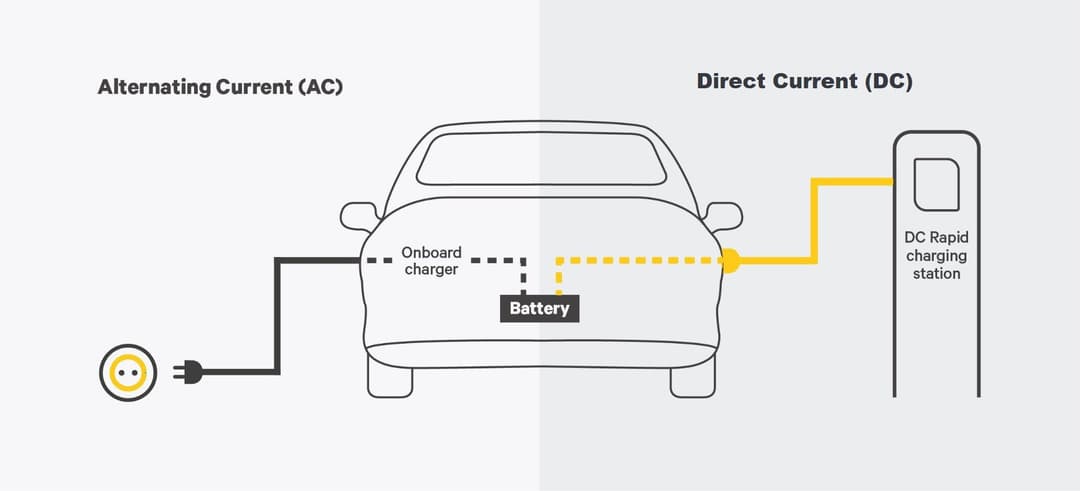
Onboard charger
When you are charging at home, power is fed from the powerpoint/wall charger as AC and converted to DC using the car’s onboard charger so it can be accepted by the battery. The onboard charger needs to be compact and lightweight. It therefore has a much lower power output (7kW to 11kW typically) compared to DC charging (50 kW to 350 kW).
These limits mean that even if you are supplying your car at a much higher current e.g. 22kW, the car will only be able to accept power based on the limit of the onboard charger e.g. 11 kW for a Tesla Model 3.
When charging at home (using AC power) electricity is supplied to a different part of the charge port (discussed below).
DC fast/rapid charger
When you are using DC chargers at any of the public charging networks, the AC to DC conversion is done on-site, allowing a much higher current to be sent directly to the car’s battery. This is the reason why the DC chargers are so much larger than the ones you see at home.
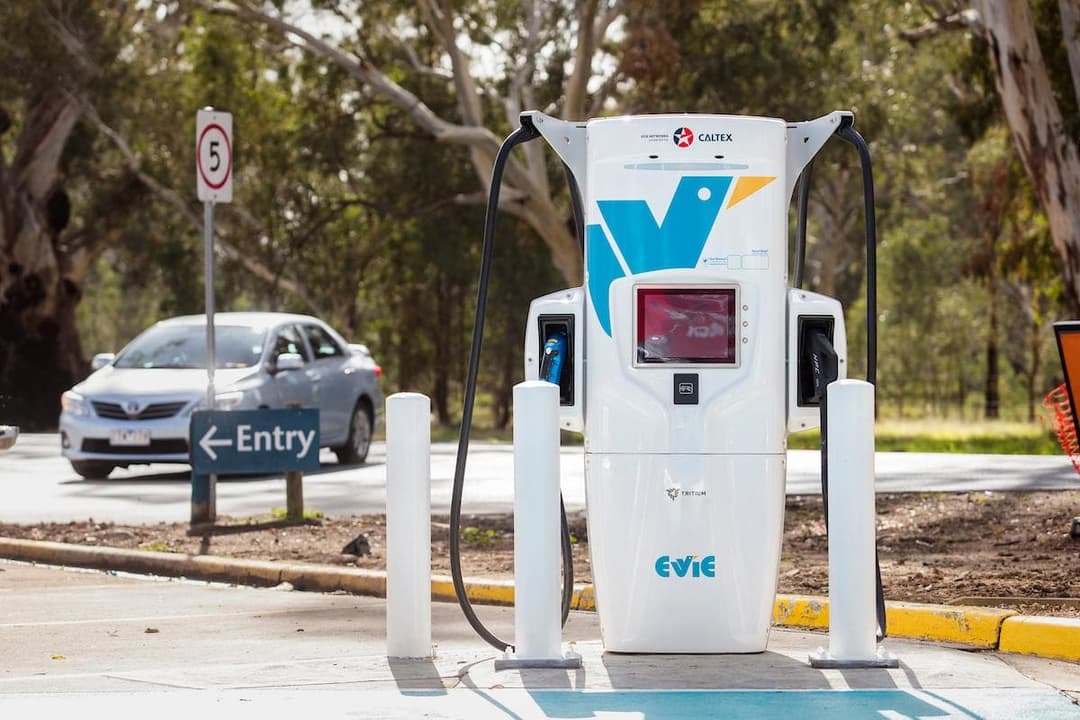
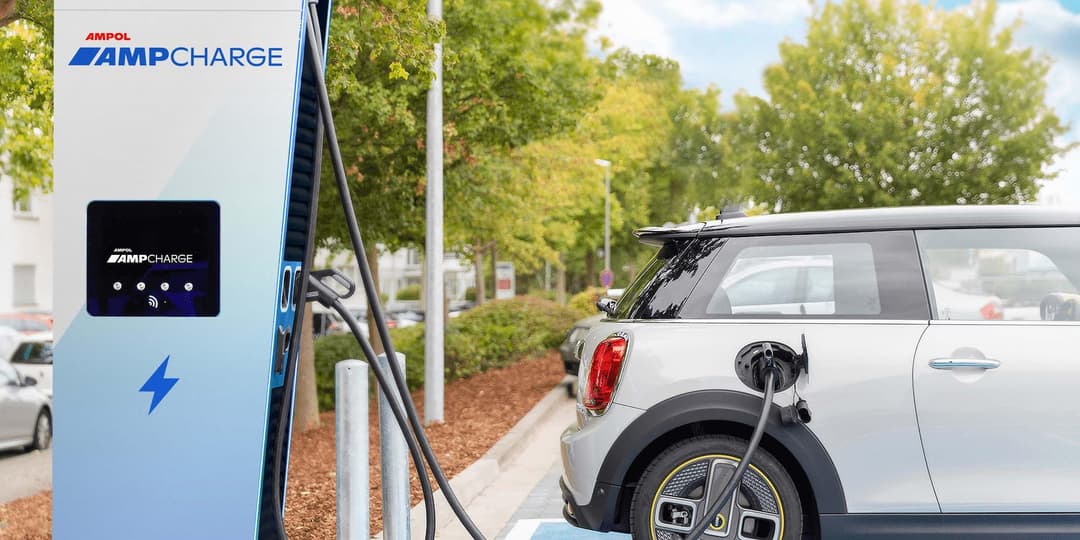
Single-phase vs. Three-phase Electricity Explained
The key difference is that three-phase supplies three times the power (kW) compared to single-phase. It is therefore better able to accommodate higher loads, for example; ducted air conditioning, pool pumps and higher output EV chargers.
A level 2 wall-mounted charger on single-phase power supplies a maximum of 7 KW, whereas three-phase supplies a maximum of 22 kW.
Single-phase can adequately support higher power devices but three-phase will provide a more consistent and reliable power delivery especially when high power devices are operating simultaneously.
Most homes in Australia are likely to have single-phase power. You can check what you have by locating your main switchboard and observing what the mains circuit breaker looks like. In the image below, the single-phase supply has a single switch, whereas the three-phase supply has three switches.
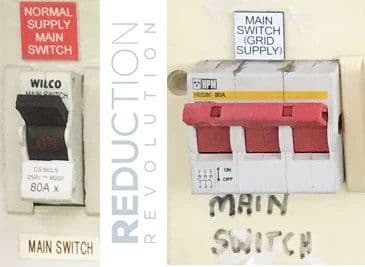
Working out the maximum charging potential of an EV
The maximum AC charging potential of an EV will be limited by its onboard charger. The limit is due to the current rating (amps) and the voltage (240 V for single-phase and 415 V for three-phase) of the charger.
Most onboard chargers are rated between 16A and 32A and support single-phase electricity. These will have a maximum charge potential of between 3.6 kW and 7.7 kW.
Higher-end models tend to be rated between 16A and 32A and support three-phase electricity. These will have a max charge potential of ~11 kW. Examples include; Model 3, Ioniq 5, EV6 and Taycan.
To support the maximum charge rate of EVs equipped with three-phase chargers, your home will need to be equipped with three-phase electricity.
You can check the MAX AC charge rate of all EVs in our database.
Key EV Charging Ports Explained
Port types
Most electric vehicles sold in Australia today come with a hybrid charging port known as CCS Combo 2 (CCS2). This means it can support both AC and DC fast charging.
The other main type is CHAdeMO which is used by first and second-generation Nissan Leaf and Lexus UX300e. This will likely be phased out as manufacturers try to harmonise standards. For example, the upcoming NIssan Ariya crossover uses CCS.
Plug types
When we talk about plugs it relates to the head at the end of the charging cable. The table below shows the key plug types you need to familiarise yourself with in Australia.
The most popular plug for AC charging is Type 2 (MENNEKES). It is used by nearly all battery-electric vehicles (BEVs) and plug-in hybrids (PHEVs) in the market.
For DC fast charging, the most popular plug is CCS Combo 2 (CCS2). CCS stands for ‘Combined Charging System’, and a plug design that combines support for charging via both AC and DC. The design features an additional two pins below a standard Type 2 plug, which facilitates high-speed DC charging.
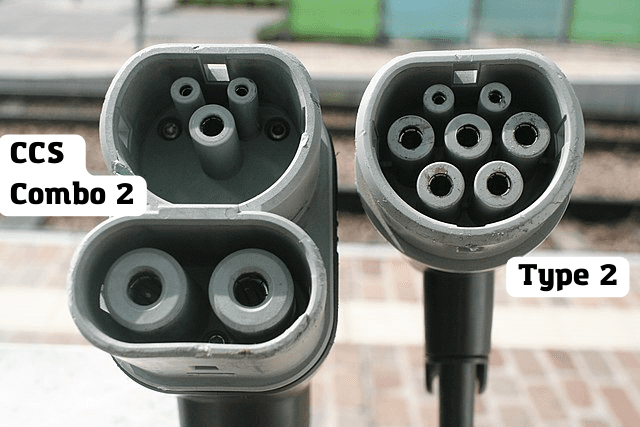
If you have a CCS Combo 2 socket in your car and want to charge at home on AC, you insert a normal Type 2 plug into the upper section of the port (refer below image).
For DC fast charging, you'll plug the CCS2 plug into the port, which will fit in both the top and bottom sections.
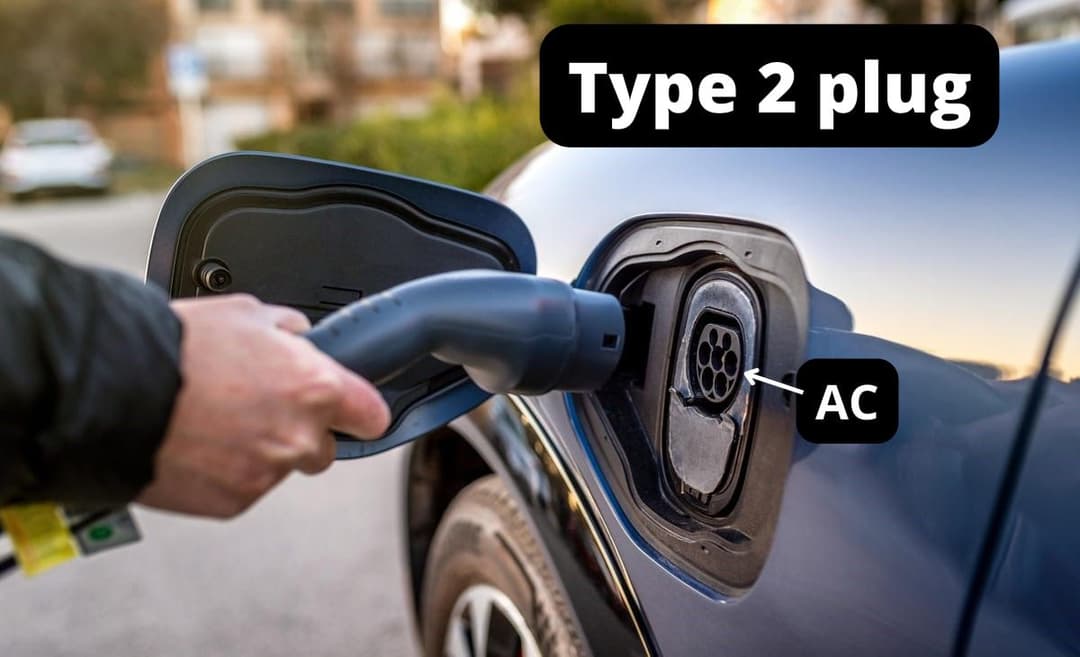
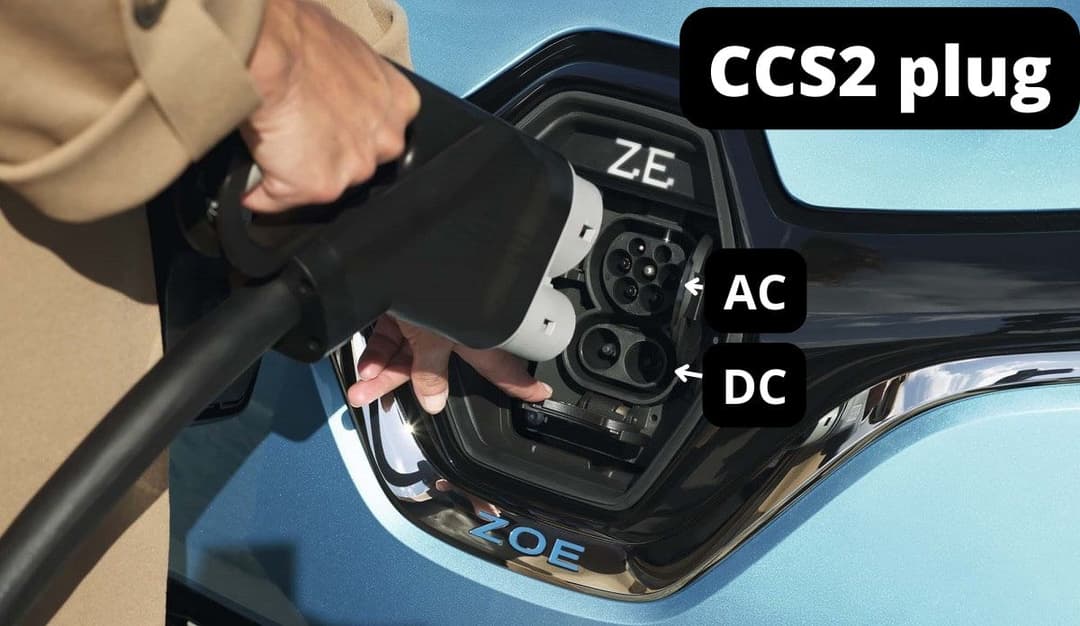
View our database to check what plug each EV model uses.
Level 1 Charging: Powerpoint and Portable Charger
Level 1 chargers, also known as 'granny' or 'trickle' chargers, typically describe the slowest way but most basic and cheapest charging setup. It comprises a portable charger (which often comes with the car) and an existing powerpoint.
If you are using an existing powerpoint then there is no need to hire an electrician. Just plug and charge.
Powerpoint types
Powerpoints (also known as sockets) can vary in the amount of energy they support. In Australia, the maximum current rating for a standard powerpoint is 10 amps (A), which can support power output of up to 2.4 kW. This is often sufficient to meet the driving needs of most drivers. For example a 10A socket could provide the energy required for the average distance driven (37 km / 6 kWh) in under 3 hours.
Powerpoints can be upgraded to support a higher output which would allow it to support a higher output charger. This would require installation by a licensed electrician. The cost for this type of upgrade typically ranges from $80 to $400.
The Australian Standard AS/NZS 3112 specifies larger pins and differently shaped ground pins for powerpoints with current ratings of 15, 20, 25 and 32 amps. Illustrated below is what some of these look like and the type of power they are capable of supporting based on the standard 240 V supply in Australia.
Portable charger types
The portable charger that comes free with your EV is generally limited to 10A - which is in line with the maximum rating for a standard powerpoint. We recommend checking your car’s manual to be sure.
If you want a faster option, you could purchase a higher-powered portable charger through EVSE suppliers such as EVSE or Jet Charge. The costs will range from $400 to $900.
Faster chargers will typically cost more due to the additional materials and electronics required to support the higher output. Higher-rated chargers will feature different heads that will match the power socket it plugs into.
Level 2 Charging: Dedicated Wall Mounted Charger
A Level 2 charger typically involves the installation of a fixed charging smart unit on the wall, connected to a dedicated power source. The installation of these units will need to be completed by a licensed electrician.
This is a popular option for those that own their property and have the autonomy to upgrade their electrical infrastructure as they wish.
Reasons for installing a wall charger
People will often opt for the wall mount for aesthetics or potentially the additional ‘smart’ functionality - explained below.
The convenience of having the dedicated unit at home and bringing the portable charger as a backup option in case it is needed is another reason.
While wall chargers are often faster than portable chargers, this is not always the case. This will depend on the current of the power source they are connected to. Often electricians will install these between 15A to 32A, making them faster than the standard 10A power points.
Installation costs for wall chargers
Wall chargers need to be installed by a licensed electrician. Typical installation costs can range from $300 to $1,500 or more. The reasons for this include:
- The distance from the switchboard to the charger.
- Upgrades to the switchboard to support a higher power requirement.
- Upgrading to three-phase power (likely to cost several thousand dollars).
- Digging or earthworks are required to run cabling to a separate garage/carport.
Cost of level 2 wall chargers
The cost of wall chargers is typically between $600 to $2500. While there are several factors that determine the price of the charger, often it is due to the smart features the charger can support e.g. smart charging - discussed below.
Smart charging
Many level 2 chargers also incorporate ‘smart’ functionality. Smart EV charging refers to the use of various hardware and software technologies that facilitate load management in EV chargers. You can read more about smart EV charging in this comprehensive guide.
Solar charging
Coordinating your charging to align with the solar production of your panels is another smart feature. We cover this extensively here.
Choosing a Suitable Charger
When it comes to choosing the right charger, the fastest may not always be more useful as it often comes at an additional cost. Depending on your situation you may never ‘recover’ the premium you pay. The following factors should be considered when choosing a charger:
💲 Your budget
🔌 Your charging needs
⚡ Your electricity supply
Budget
Below is a summary of the all-up costs for level 1 and 2 charging options. Your charging needs and your ability to upgrade your electricity supply will determine which option is relevant to you.
Charging needs
Your charging needs will be primarily determined by the distance you travel. More distance = more energy = more charging required.
To help determine your charging schedule, we recommend using our charging calculator which will estimate how long it will take to charge your EV and the cost. This may help justify whether the investment is justified for faster and smarter charging options. The average driver (37 km/day) would need to charge for 3 hours per day using a standard 10A socket and portable charger.
If you decide you need faster charging, the three mains ways to do this include:
- Upgrade your power socket to support a higher current
- Install a wall unit charger that has its own dedicated power source which supports higher current
- Upgrade your property’s power infrastructure to three-phase, which would increase potential charger output to 22kW and triple the power of all sources.
Electricity supply
If you’ve decided you need to upgrade your power or install a level 2 charger, the remaining consideration will be whether your circumstances permit it.
If you own the property it’s a straightforward process - you can proceed straight to getting a quote from an electrician. If however, you are renting, you’ll need to obtain consent from your landlord for most types of electrical upgrades. While a wall charger will most certainly add value to a property, the ‘newness’ of the technology may result in apprehension from some landlords initially.
Frequently Asked Questions
About the author
Stay up to date with the latest EV news
- Get the latest news and update
- New EV model releases
- Get money savings-deal






